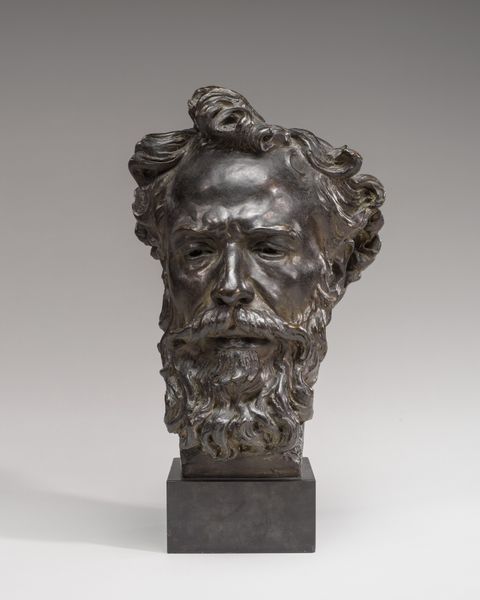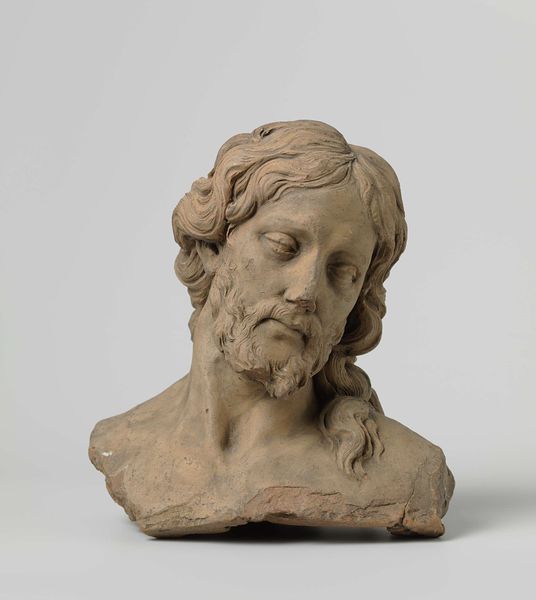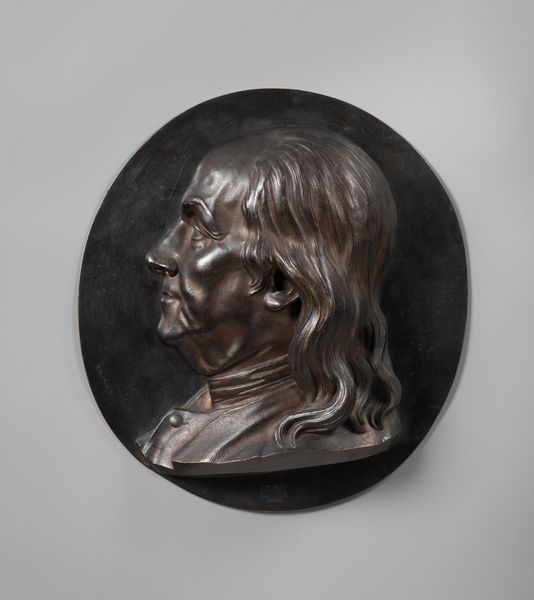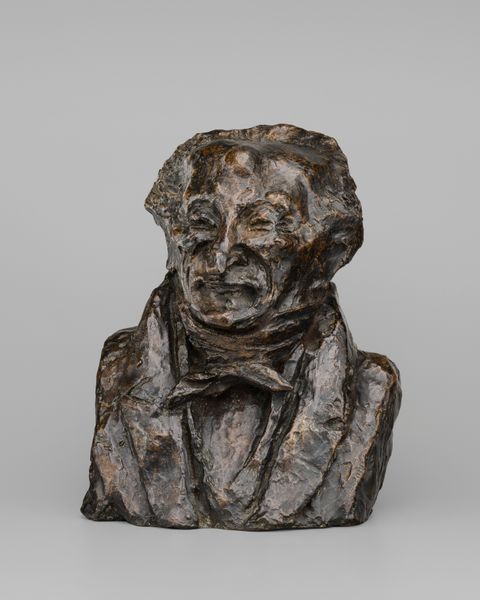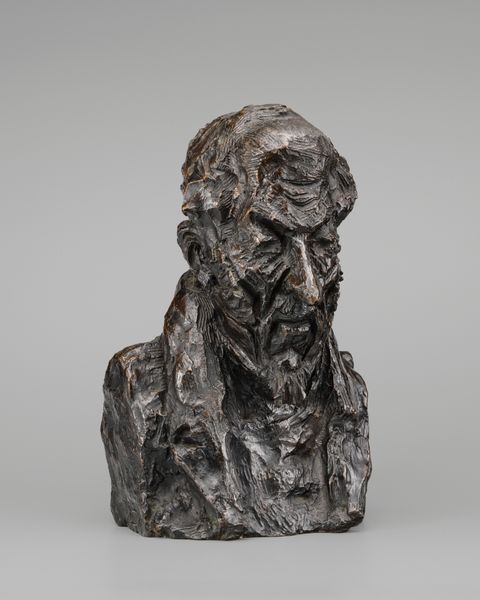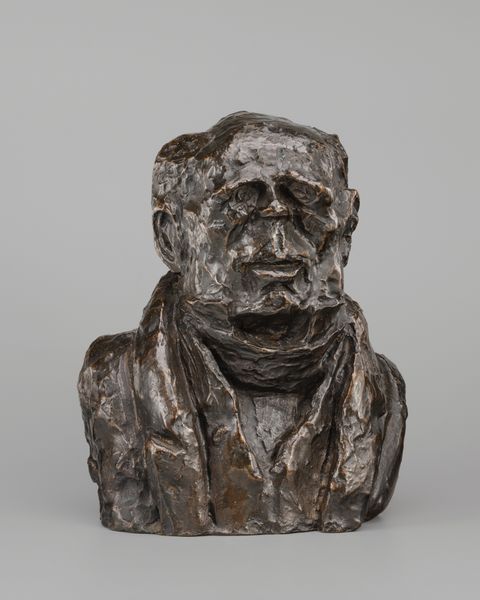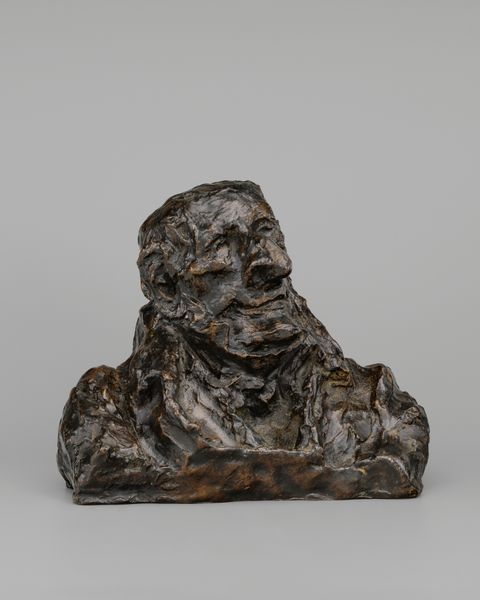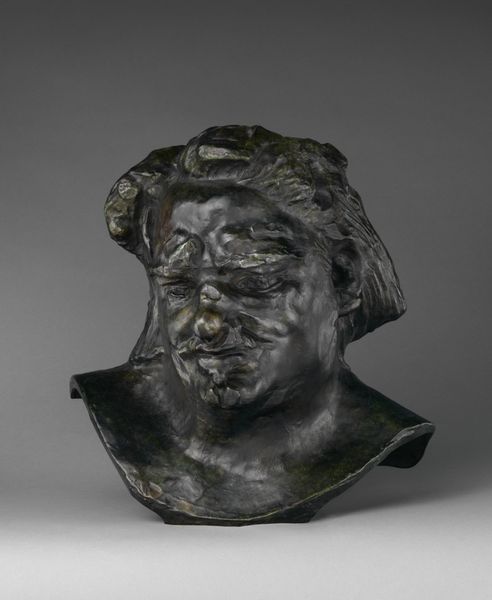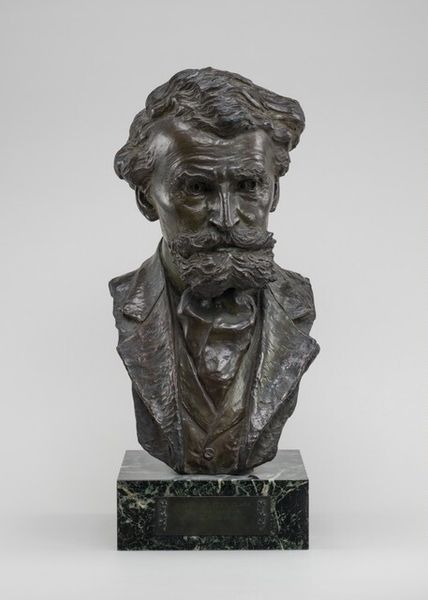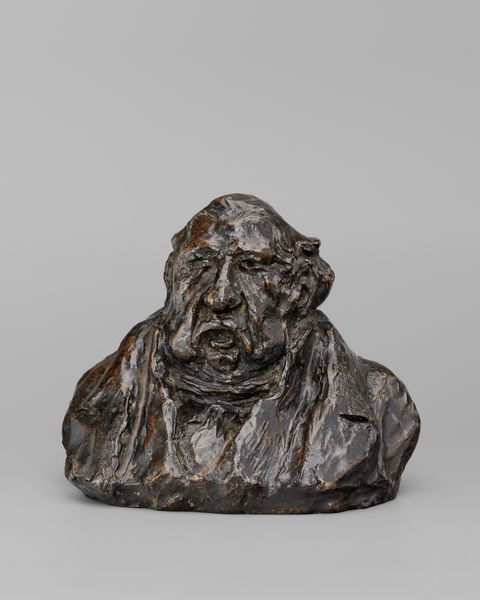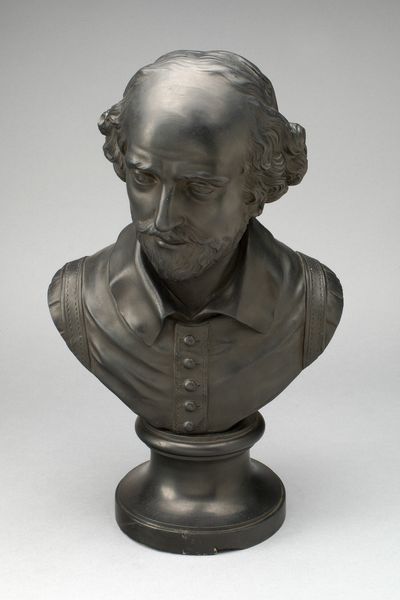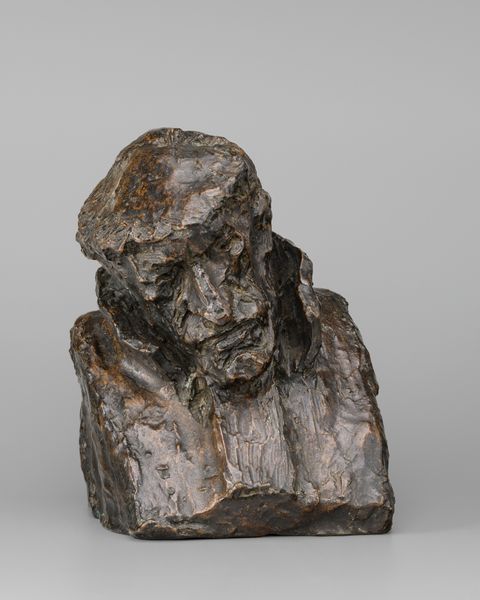
Dimensions: Overall (wt. confirmed): 21 3/8 × 15 3/4 × 11 in., 42.5 lb. (54.3 × 40 × 27.9 cm, 19.3 kg)
Copyright: Public Domain
Curator: We’re now in front of Auguste Rodin’s “St. John the Baptist,” crafted in bronze around 1880 and residing here at the Metropolitan Museum of Art. Editor: The first impression is stark: intense emotionality rendered in rigid material. I note how light catches the rough surface of the bronze, creating dynamic textures. Curator: That surface speaks volumes. Rodin moved away from the highly polished academic sculptures typical of his time. He deliberately left traces of the process. Editor: Precisely. We can almost feel the artist’s hand molding the clay, the bronze seemingly caught in mid-transformation. Observe the subtle asymmetry, the deliberate imperfections... it’s profoundly affecting. Curator: And it makes sense within the historical context, doesn't it? John the Baptist was, after all, a rugged figure, a voice crying out in the wilderness, an outsider, and Rodin encapsulates that iconically. He connects the past with raw, palpable human emotion. Editor: The upward gaze, the slight parting of the lips…is it one of spiritual ecstasy or primal yearning? Semiotically, this invites myriad interpretations about sacrifice and purpose, and about suffering, even. Curator: The cultural memory surrounding John is potent—repentance, courage, sacrifice—but Rodin’s sculpture pushes past straightforward hagiography. It touches on broader, more existential questions about humanity. The tilted head evokes images of crucifixion. Editor: His contorted neck echoes not the triumphant savior, but suffering itself. Is the artist trying to remind the world of Christ’s teachings and mission. His neck appears weighted under the responsibility, his open mouth suggests the eternal nature of communicating His Message. Curator: By breaking away from traditional smooth finishes, he embraced vulnerability. It invites us to reconsider familiar narratives. The bronze itself ages over time, mirroring human vulnerability in material form. Editor: In observing, I’m left pondering Rodin’s bold defiance of the smooth idealized Neoclassical aesthetic. The fragmented form speaks to a radical shift in sculptural expression, marking the rise of Modernism. Curator: Indeed. He offered us a deeply psychological portrayal. Editor: Yes, a fascinating piece!
Comments
No comments
Be the first to comment and join the conversation on the ultimate creative platform.
